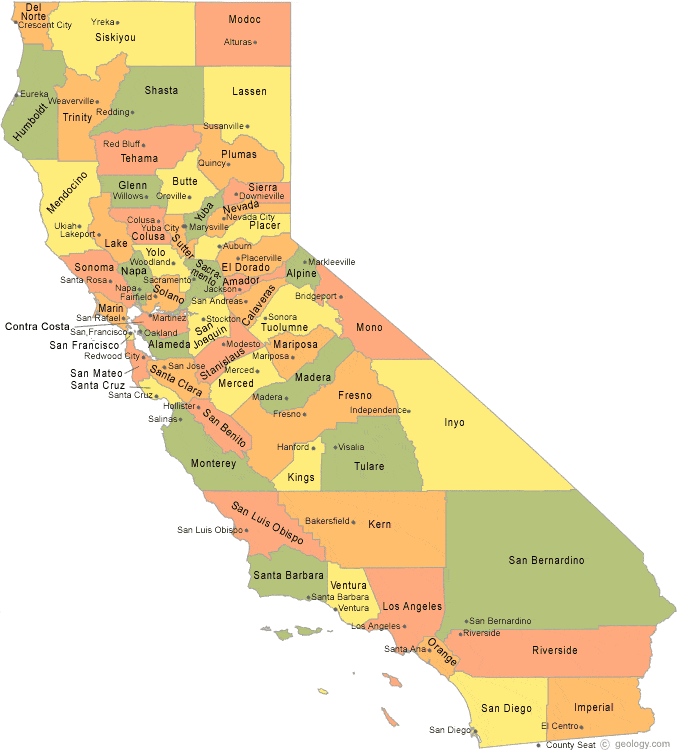
Have you ever wondered what the exact county count in California is? You’d be surprised how many people ask the same question. Whether it’s for school projects, travel plans, or simple trivia, the answer—58—comes up again and again, butthose two digits barely scratches the surface.
California’s counties forma tapestry of extremes: surf-washed beach cities, high-elevation wilderness zones, fruit-laden interior valleys, and thriving tech metropolises. Each county carries its own story, shaped byimmigration waves, promising new industries, and waves of cultural fusion.
Throughout this guide, we’ll dig intothe timeline that locked the total at 58, the services counties deliver day-to-day, and which ones stand out for size, population, or sheer quirkiness. When we’re done, you’ll know the facts—and be ready to ace any quiz with confidence.
County-Making in Early California
Upon admission to the United States, the map looked nothing like today’s. A tidal wave of forty-niners and immigrants forced lawmakers to redraw borders. Before the century turned, the count had expanded toward over five dozen counties, and that same year the final five were added, cementing the now-famous tally of 5 8.
Legislative records show that most new counties were born because of three overlapping forces:
- Geographic isolation made court access impossible.
- Tax disputes pitting ranchers against merchants triggered secession campaigns.
- Cultural rivalries demanded tailored governance.
In less than seventy years, the political map settled. In modern times, every effort to create county #59 stalls, leaving historians to label the era of county making decisively over.
A County-by-County Tour of Terrains
Imagine a line from foggy Crescent City to the date groves of Coachella, and you’ll thread through a climatic kaleidoscope. Pacific-facing districts soak up Mediterranean precipitation, while basin counties in the Central Valley bank on irrigation.
- Mountain counties such as Mono, Mariposa, and Calaveras host ski resorts.
- River-delta territories fight subsidence but export produce worldwide.
- Channel-coast administrators like Ventura oversee ferry routes.
Such variety explains how water rights, zoning, and ag yields diverge so sharply. Climate, after all, shapes crops and careers.
Behind the Scenes at the County Level
Within the state’s tiered system, municipalities handle zoning, but county boards oversee crucial baseline services that make communities livable. From birth to death—vital records, coroner reports, property deeds—all reside at the registrar of voters.
Sheriff’s departments patrol unincorporated land, while superior courts hear probate battles. Social-services bureaus distribute food assistance. Funding debates spark long agenda nights.
Example: Contra Costa’s Shared Services Model
Los Angeles County alone employs 100 000+ workers, showing how elastic county structures can be. One template doesn’t fit all when budgets span five figures to double-digit billions.
At day’s close, these 58 mini-capitols act as middle managers between Capitol and curbside. Grasping their portfolio guides newcomers navigating paperwork.
Population, Economy, and Record-Holding Counties
California houses over 39 M souls, more info but the headcount collects in dramatic clumps. Los Angeles County alone hosts more than one resident in four. At the other extreme, high-elevation Alpine hovers around a thousand residents.
- Most populous: Los Angeles
- Fewest people: County of Alpine
- Largest area: San Bernardino County
- Tightest borders: San Francisco
Money, like people, concentrates and evaporates. Silicon Valley counties see venture cash flow in at record rates, while interior ag counties depend on seasonal labour influxes. These fiscal contrasts drive school funding debates every decade.
Knowing which county tops which listis trivia gold: county metrics shape property taxes and commute times.
The Ultimate California County Circuit
County-collecting hobbyists, setting foot in each CA county is the new bucket-list quest. The classic route kicks off in the south-west corner, rolls up the Pacific Coast Highway, curves inland at Santa Cruz, then zigzags across nut groves and tomato fields, before snaking into the high Sierra for historic gold-rush hamlets.
Three-Day County Clusters
- South-land Loop – Border to wine country; ten jurisdictions in four days.
- Crop-Belt Drive – Bakersfield up to the delta; produce-market run.
- Northern Peaks – evergreen corridors; hidden hot springs.
Cap off the circuit in the desert southeast, after two thousand kilometres of asphalt. After that, you can answer any road-trip quiz about county tallies—because your copyright stamps prove it!
California County FAQ
Wondering how the county system works? Start with these quick answers.
How many counties does California have?
Government documents list 58 counties—a number that hasn’t changed since 1907. Whether you ask the Secretary of State, the Census Bureau, or a local historian: 58.
Where do the most Californians live?
Los Angeles County tops the list, housing roughly one in four Californians. From Hollywood to high tech, a mix of industries continues to fuel steady inflow.
Which CA county has the fewest residents?
The crown for smallest population goes to Alpine County, rarely crossing the 1 200-resident mark. Its remote Sierra setting keeps growth modest, making it a haven for solitude seekers.
Which county covers the largest land area in California?
Geographic titan San Bernardino County encompassing deserts, mountains, and metro suburbs alike. Its sheer scale means climate zones shift from alpine snow to Mojave heat within county lines.
What historical events fixed the number at 58?
The current tally emerged from 19th-century partitioning, with the final adjustments ratified in 1907. Since then, proposals to add a 59th county have surfaced but never cleared the Legislature.
Is it possible to form a 59th county?
Legally, yes—state law allows it, though the process is arduous. Financial viability studies plus state-level sign-off deter most would-be county creators. That’s why no county lines have moved since the early 1900s.
Which responsibilities fall to county governments?
Counties handle the backbone of local governance: voter registration, deed recording, health clinics, and sheriff patrols. Their wide remit bridges state mandates with community needs, making the 58 jurisdictions essential to all Californians.